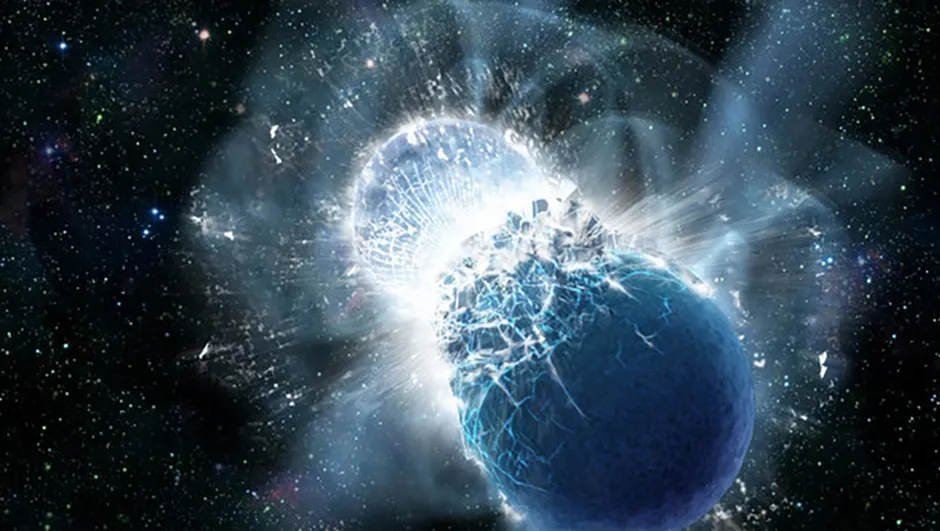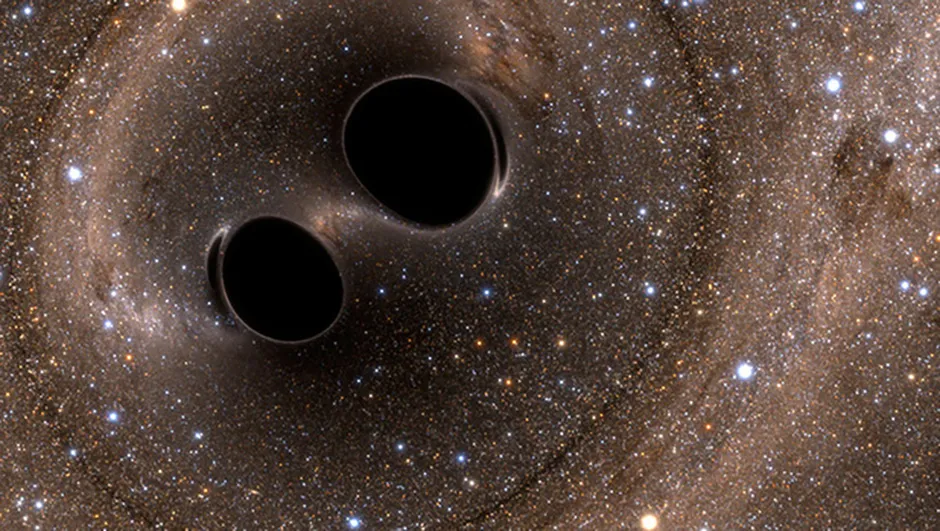Supermassive black holes, binary neutron stars and Einstein.What do they have in common?They’ve all shaped our understanding of gravitational waves.
But what are gravitational waves?
“Gravitational waves are the stretching and squeezing of space-time,” explains Mark Hannam, a Professor at Cardiff University who specialises in gravitational waves.
According to Einstein’s theory of general relativity, anything with mass exerts gravity, and gravity distorts the curvature of space-time.

So, if two massive objects were to collide in space, this would send out a ripple or wave that could be detected using highly sensitive equipment.
“If I move my arms around that produces a gravitational wave.
They were predicted in Einstein’s theory in 1916 but they hadn’t been observed until a couple of years ago and the reason for that is gravity is the weakest force” Hannam says.

How do we detect them?
LIGO (Laser Interferometer Gravitational-Wave Observatory)is a large-scale observatory that detects gravitational waves.
It consists of two interferometers both located in the US, thousands of metres apart.
The interferometers consist of 4km-long tunnels in which laser beams are sent back and forth in two directions in an 'L' shape.
When a gravitational wave passes through the detectors, one arm becomes squashed and the other stretches, and this happens back and forth.
This changes the interference pattern of the laser beams, meaning a gravitational wave has been detected.
“The main thing we do to reassure us is to have more than one detector. The chances that you would see the exact same signal in both detectors at the same time, just due to some random event, is very small,” says Hannam.
LIGO's detectors had been operating from the early 2000s, but failed to detect anything.
The detectors went through five years of upgrades to increase their sensitivity, and in September 2015 they were turned on again.
“The hope was that okay, in the next year or two maybe we will see something, and what was really incredible was that within a day the first signal came in. People were so shocked, that they didn’t really believe it,” says Hannam.
On 14 September 2015, scientists at LIGO observed gravitational waves for the first time.
The waves originated from two black holes that collided into each other, forming a massive black hole.
In this final stage, the black hole gave off the last tail of a gravitational wave.
What did the signals mean?
Until 2015, everything that we could observe in the Universe was visible in the form of electromagnetic waves.
However, most of the Universe doesn’t give off electromagnetic waves.
Now with our ability to detect gravitational waves, we can start to see another fraction of our dark Universe.
Part of Professor Hannam's work is solving Einstein’s equations for gravitational waves, and what they should look like when they are produced by the collision of two black holes.
“We developed one of the first models that deal with generic configurations of black holes merging and actually we just put that into the LIGO analysis code only a few weeks before the detection came.
At the time we were only half convinced it was a reliable model… it all sort of worked out!” he says.

“It was clear immediately from the signal that there were two black holes and you could make a good estimate of their masses with the signal by eye,” explains Hannam.
The two black holes were around 30 times the mass of the Sun.
This was a key discovery because this particular size of black hole was only theorised.
The ones scientists knew about were either around 15 times the mass of the Sun or smaller, or else supermassive black holes.
Scientists were not expecting to see a merging binary black hole system so quickly.
In fact, the team at LIGO were hoping to see two neutron stars merging, as they already had observational data for this type of event.
Finally, in August 2017, a gravitational wave came in from exactly that.
The two neutron stars produced a gamma ray when they merged, which was detected by electromagnetic telescopes.
This particular type of gamma ray had only been theorised up until that point, making this another triumph in the astronomical community.

The binary neutron star observation showed that they were relatively close as the signal was three times stronger than expected.
This was a positive for LIGO as strong signals can give details about the nuclear physics inside the star.
“We’ve actually put constraints on the nuclear physics of neutron stars, which is something I didn’t think would happen for the next ten years.
I thought that we would need much more sensitive detectors to measure these things but we just got really lucky,” says Hannam.
The future for gravitational waves
The technology that goes into LIGO is pushing the bounds of what humans can do, and detectors are regularly improving and increasing in sensitivity.
It is hoped that by the early 2020s, gravitational waves will be detected every week.
The next generation of detectors could provide a huge wealth of astrophysical data that could detect all the black hole mergers in the Universe.
LISA (Laser Interferometer Space Antenna), for example, is an interferometer which will be in use by 2030.
This space-based detector will be sensitive enough to detect gravitational waves from the early Universe and could give scientists insight into the Big Bang.
“Because it’s a whole new way to look at the Universe, there’s a sudden explosion of things to do and things to look for,” says Hannam.
There is also hope for an even more accurate calculation of Hubble’s constant, which is the value of the rate of expansion of the Universe.
Increased sensitivity in the detectors could nail Hubble's constant down by reducing the error margin.
But the discoveries from LIGO have already confirmed theories about the Universe and in particular, black holes and neutron stars.
“We learnt something about them, but nothing that was a complete surprise,” says Hannam.
“The real exciting thing will be when we see something that we don’t expect and we don’t understand, and then we have to work it out.”